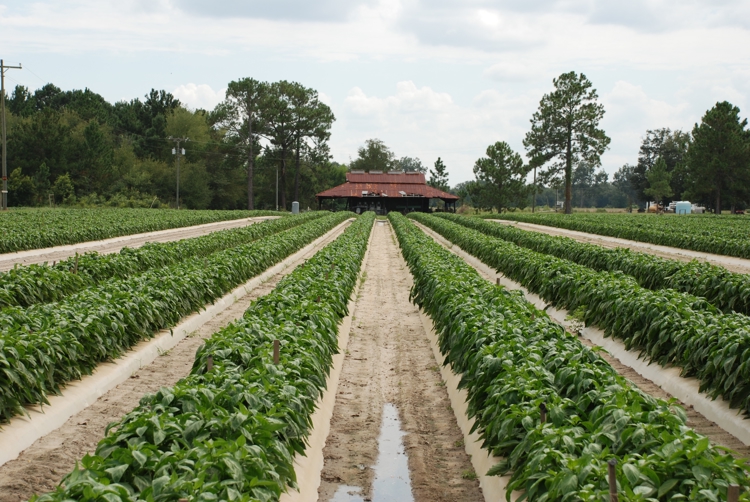Maximizing Your Drip Farm Irrigation Systems for Row Crop Farming
Cropland harvesting represents America's primary method for producing the country's most important food staples, including tomatoes, peppers, corn, soybeans, and more. Whether you're growing single-season or multiple-use crops, getting the best return on your investment is at the heart of a sustainable and profitable farming business. And an essential part of this effort involves investing in and maximizing your farm's irrigation system.
The ag industry is a volatile place in 2022. Already-challenging climates where farming takes place have been magnified by extreme heat and flash drought conditions that, topped with the continued absence of meaningful rainfall, as well as ample water storage, is causing extensive crop damage nationwide on farm irrigation systems.
Farmers in the field also currently face one of the highest input costs on record due to rapidly rising water, fuel, personnel, and fertilizer costs. At the same time, farmers are simultaneously dealing with some of the lowest commodity prices ever, many of which are the same as they were 30 or 40 years ago. All of which begs the question: how can applying drip irrigation to traditional “row” crops make a massive difference?
Existing Irrigation Methods’ Numerous Challenges
Water availability is one of the industry's biggest challenges, as agriculture depends on slowly depleting water sources. While the primary division of farm irrigation system methods for row crops continues to be sprinkler and flood irrigation, the downsides to these traditional methods are not going away. High humidity, wastewater, increased fungus, weed pressure, and insect damage runs rampant, and condensed growing timelines allow little room for error in solving additional barriers.
With these challenges, there has been the slow but successful adoption of precision irrigation systems depending on the crop. Our experts have witnessed one of the largest increases in interest in precision irrigation this year alone.
Choosing Precision irrigation
Precision farm irrigation systems is the most water-efficient method available to farmers today. With a 90% efficiency rate, farmers are almost guaranteed to save water by less usage and improved crop quality. Our farmers often tell us it is like “paying for more land” with how much more efficient their yields become after switching to drip.
While drip’s benefits are plentiful, it's only maximized if the proper maintenance and mindset are brought into its adoption. If you're in the process of adopting this system for row crop farming, here are some recommendations to help maximize your investment. As with any farm irrigation systems, drip irrigation’s output results from its working components.
How to Maximize your Irrigation System
- Invest for the Long Run
Precision irrigation systems consist of drip lines, pipes, and filtration solutions, all working together to deliver the precise amount of water and fertilizer to a plant. Cheaper or misused components can impact efficiency and ultimately limit the upside of your growing seasons.We recommend researching your plant's needs and what irrigation equipment solutions will work best to meet your plant’s irrigation requirements. We offer expert insight into every major crop available, taking the guessing game out of the equation.
-
Maintenance, Maintenance, Maintenance
While some farmers have grown accustomed to maintaining their current farm irrigation system of choice, precision irrigation systems need specialized maintenance. To take care of your new system properly, take the time to learn your system's requirements and monitor for irregularities consistently.
Catching and addressing irregularities allows you to fix potential mistakes early and limit disruptions to your harvest. Precision irrigation systems are fully functioning systems that are sophisticated beyond a ‘set it and forget it approach. -
Experts Agree: Success Doesn’t Grow Overnight
From our experience, most growers expect a significant learning curve during the first year of switching to precision farm irrigation systems. It’s also important not to be alarmed if you don’t see water reduction; an increase in production will offset this.
It’s also important to know that you can build your irrigation system as you go. We generally recommend using your initial budget to maximize your efficiency, then fine-tuning your system by applying learnings and upgrading equipment as the seasons go by.
Every farm and harvest is different, so nothing saves more time than scheduling time to speak to a precision irrigation expert who can offer precise guidance and customization recommendations for your specific operation, crop, and location. Think of it almost as a Drivers’ Education class for managing your crops and farm irrigation systems. Experts can include your local distributor, irrigation system dealer, and specialized consulting firms alongside Netafim USA specialists.
The Netafim Advantage
And as the pioneering company for drip irrigation, Netafim USA has engineered each product to help meet farmers’ financial and sustainability goals through custom drip irrigation system setups unique to their land and plots.
Counting on an extensive offering of automation, filtration, valves, thin and heavy wall driplines such as our field-tested Streamline™ X, Aries™and DripNet PC™, among other products, Netafim has the equipment and institutional knowledge for all seasonal row crop farm irrigation systems needs. So whether you’re taking the first steps to switch over to precision irrigation or looking to maximize your current system, we are standing by, ready to support.

Comments
We'd love to hear your thoughts! To enter a comment, type your name and email address.